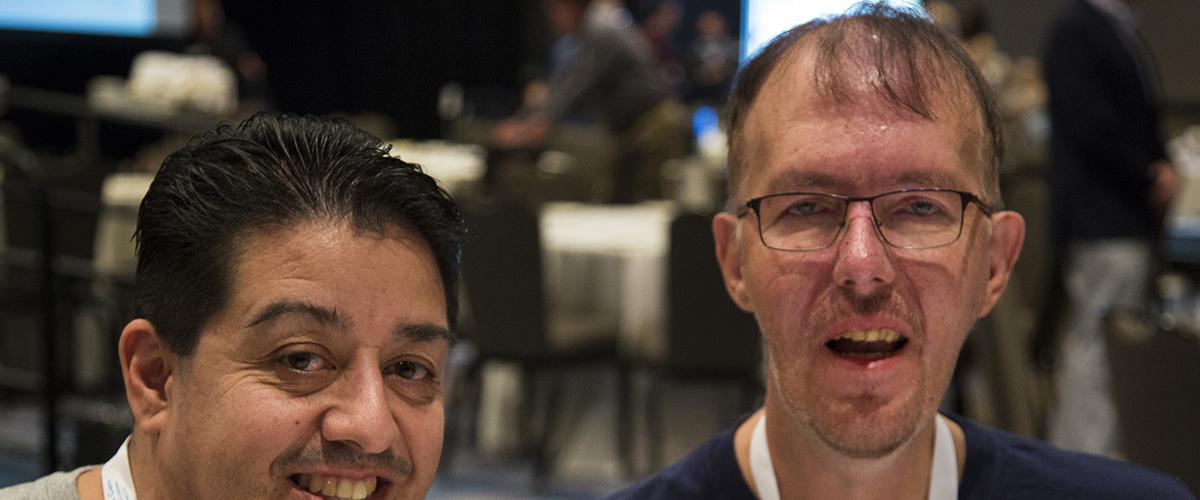The muscular dystrophy field provides case studies of how flawed assumptions about the mechanistic understanding of a disease can lead therapeutic discovery and development efforts astray. One should never assume that we “already know” all key aspects of disease pathogenesis and thus have identified all feasible targets for therapeutics.
While the DM field certainly has developed a strong disease understanding, including of molecular targets that are tractable for drug and biologic development, there are many nagging questions remaining, such as the role of RAN translation in DM1 and DM2 and that of the epigenetic modifications upstream of the DMPK locus in CDM. In addition to these known unknowns, there likely are unknown unknowns in DM biology to worry about. Therapeutic efforts certainly need to go forward for rationale targets. But, as the NINDS concluded several years ago, there will always be a need for the novel findings that originate only from continuing basic and mechanistic research.
Might RNAi Machinery Play a Role in DM1?
A new article (Qawasmi et al., 2019) from Drs. Susana Garcia (University of Helsinki), Yuval Tabach (The Hebrew University of Jerusalem), and colleagues explores an alternative gain-of-function mechanism, that expanded CUG repeats in the DMPK transcript serve as templates for gene silencing via RNA interference (RNAi). This work utilized a novel C. elegans model of DM1.
The research team used the worm model they had developed previously, expressing 123 CUG repeats in the 3’UTR of a GFP transcript driven by a skeletal muscle promoter. Phenotypically, this model is characterized by motility and heat shock survival response defects.
To show that RNAi could be activated by expanded CUG repeats independent of other RNA mechanisms known to be operative in DM1, wild type worms were fed plasmid expressing RNA with 50 CTG repeats—this RNA is known to be cleaved and the resulting short CUG fragments activate RNAi. Data showed the development of motility defects similar to that of their 123 CUG DM1 model and a heat shock survival defect.
Consistent with findings in wild type worms fed expanded CUG plasmid, the 123 CUG repeat DM1 model showed, over time, a decay of the exogenous CUG repeat transcript and its protein product. By silencing RNAi pathway genes, the team showed that gene silencing was responsible for disappearance of the 123 CUG repeat. In the next series of experiments, they tested whether CUG repeats in their DM1 model were similarly processed and act as non-coding RNAs to silence expression of other endogenous CUG-bearing genes via RNAi. In these studies, expression of endogenous genes bearing at least 4 repeats was reduced by 1.6-fold. This suggests that expanded CUG repeat transcripts activate RNA silencing followed by the downregulation of endogenous CUG-bearing transcripts. Using RNA-seq of entire worms, a total of 982 genes were found to be downregulated by ≥ 1.5x; because some of the knocked down genes are not expressed in muscle, the overall effect apparently involves non-cell-autonomous RNA silencing in adjacent tissues. Finally, knocking down genes comprising the RNAi machinery rescued expression of genes that were otherwise affected in the 123 CUG repeat model.
Connecting the Dots
Collectively, these studies support the conclusion that expression of CUG expanded repeats triggers an RNAi-mediated repression of multiple endogenous genes that normally contain CUG repeats in their transcript. Thus, RNAi pathways may contribute towards the pathogenesis of DM1 and thus may represent a potential target for therapeutic intervention in the disease. Future studies should evaluate the potential operation of RNAi driven pathology in mammalian models of DM1 and determine its relative contribution to disease.
Reference:
Expanded CUG Repeats Trigger Disease Phenotype and Expression Changes through the RNAi Machinery in C. elegans.
Qawasmi L, Braun M, Guberman I, Cohen E, Naddaf L, Mellul A, Matilainen O, Roitenberg N, Share D, Stupp D, Chahine H, Cohen E, Garcia SMDA, Tabach Y.
J Mol Biol. 2019 Mar 14. pii: S0022-2836(19)30121-4. doi: 10.1016/j.jmb.2019.03.003. [Epub ahead of print]

